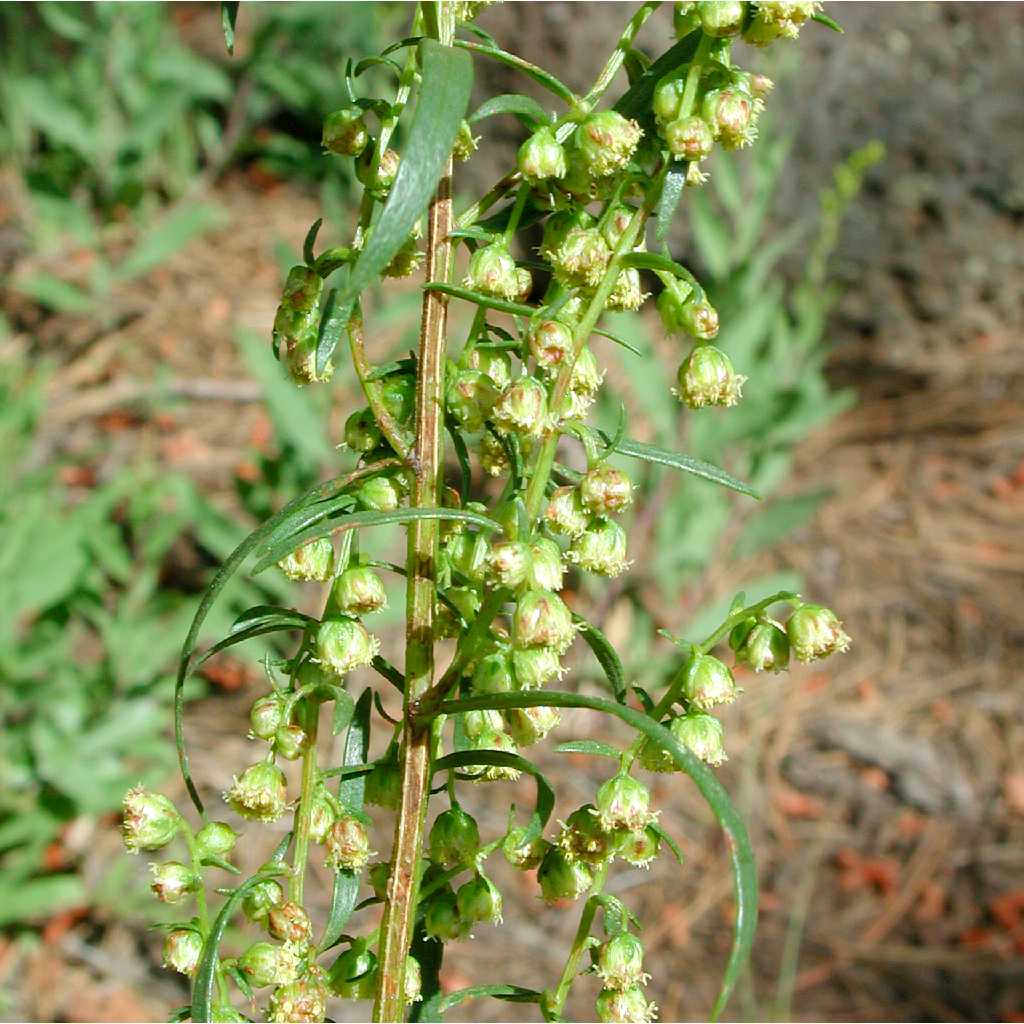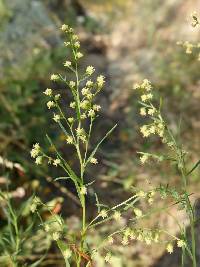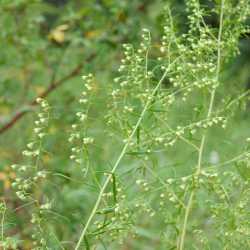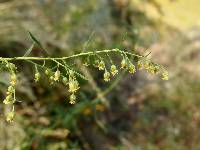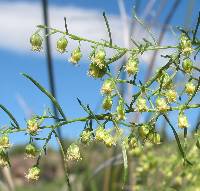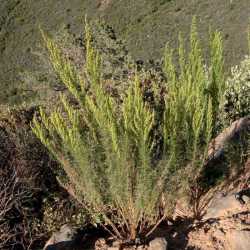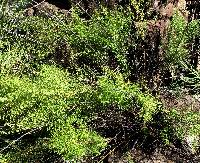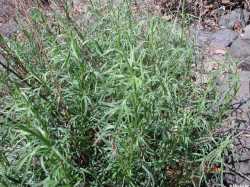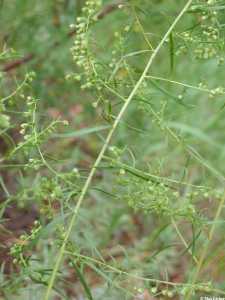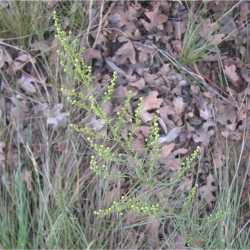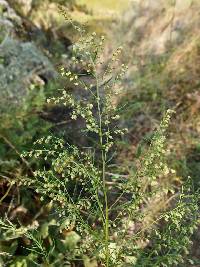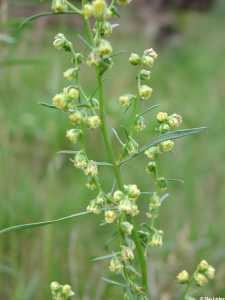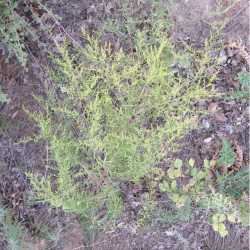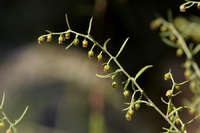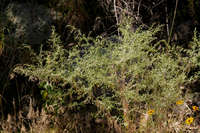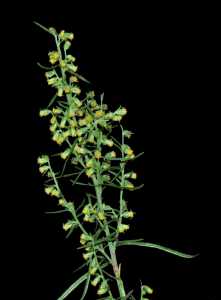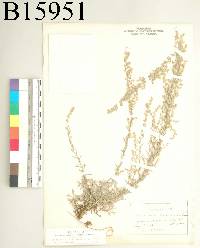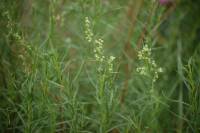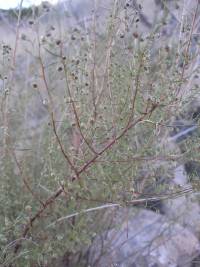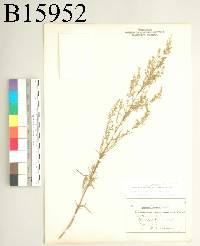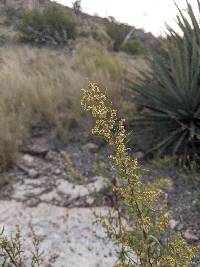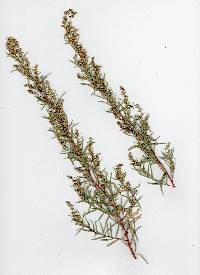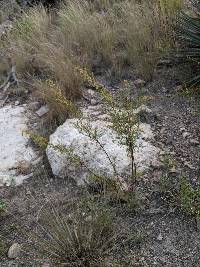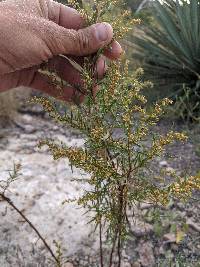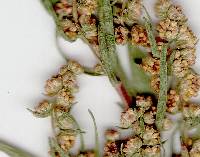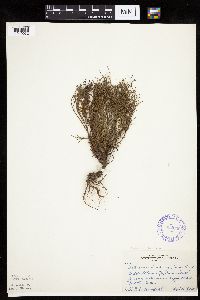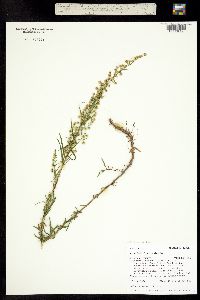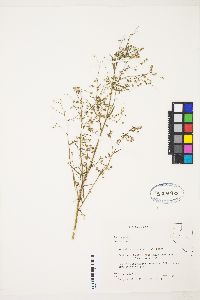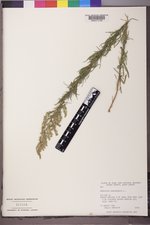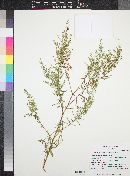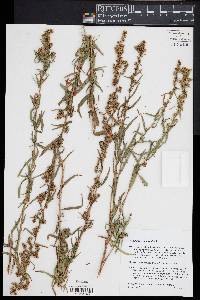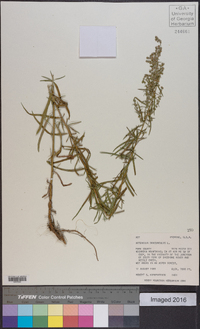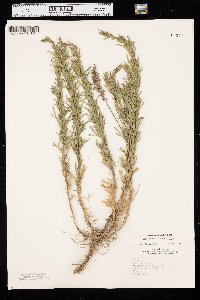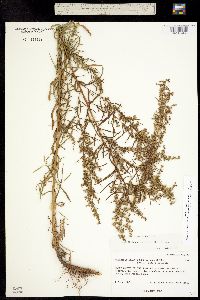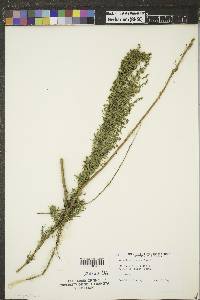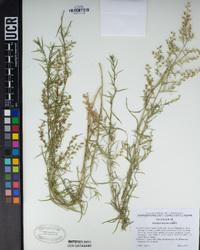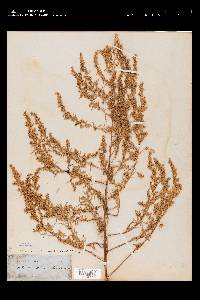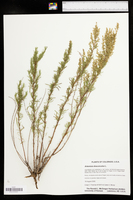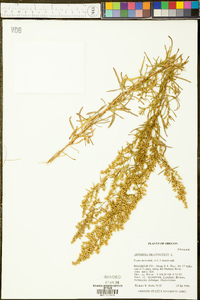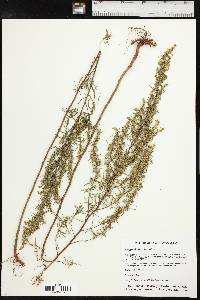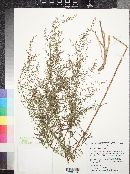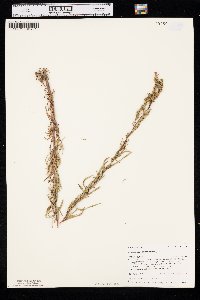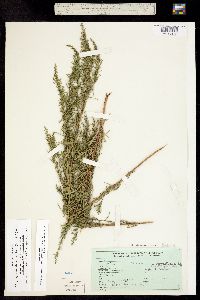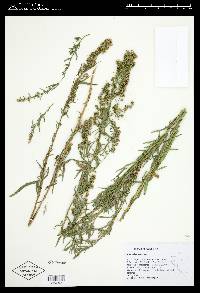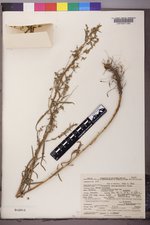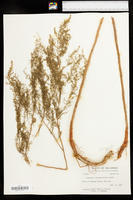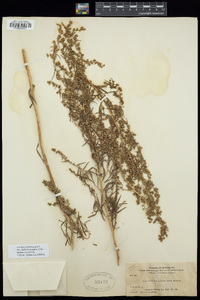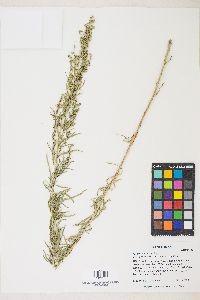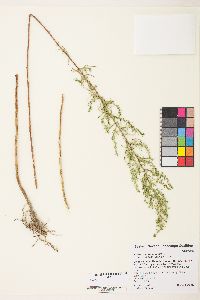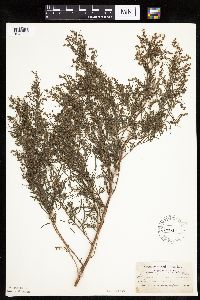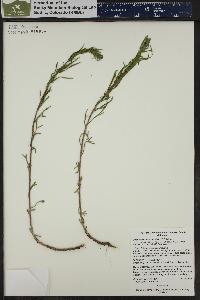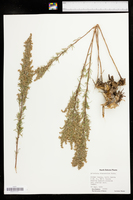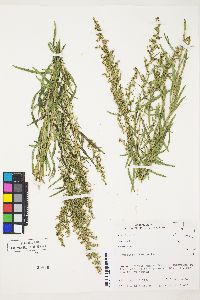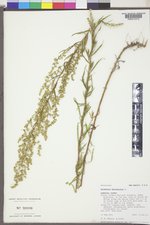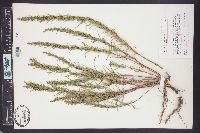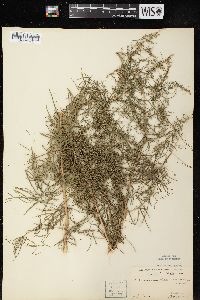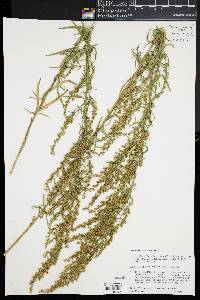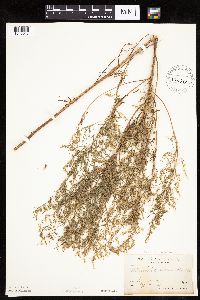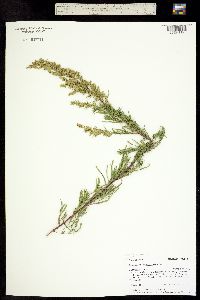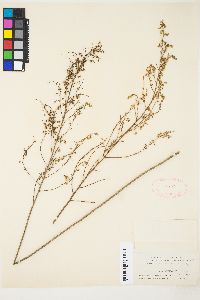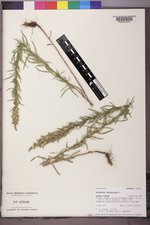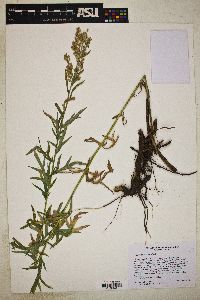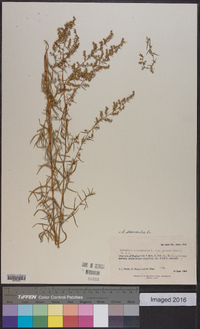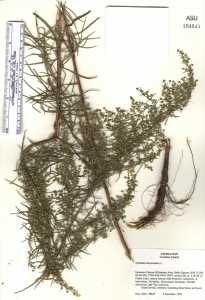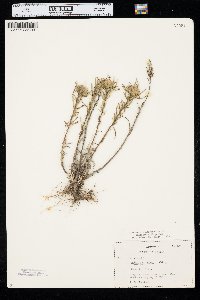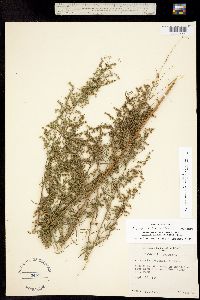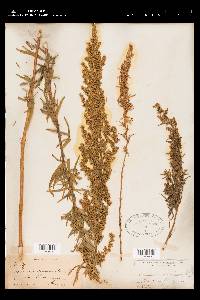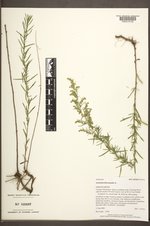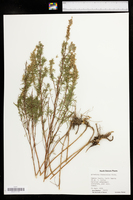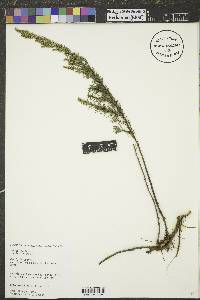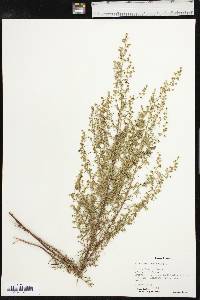Artemisia dracunculus
|
|
|
|
Family: Asteraceae
Dragon Wormwood, more...tarragon, false tarragon, green sagewort, silky wormwood, wormwood
[Artemisia dracunculoides Pursh, moreArtemisia dracunculoides var. dracunculina (S. Wats.) Blake, Artemisia dracunculus subsp. glauca (Pallas ex Willd.) Hall & Clements, Artemisia dracunculus var. glauca (Pallas ex Willd.) Bess., Oligosporus dracunculus (L.) Poljakov, Oligosporus dracunculus subsp. dracunculinus (S. Wats.) W.A. Weber, Oligosporus dracunculus subsp. glaucus (Pallas ex Willd.) A.& D. Löve] |
Perennials or subshrubs, 50-120(-150) cm, strongly tarragon-scented or not aromatic; rhizomatous, caudices coarse. Stems relatively numerous, erect, green to brown or reddish brown, somewhat woody, glabrous. Leaves: proximal blades bright green and glabrous or gray-green and sparsely hairy, 5-8 cm; cauline blades bright green (gray-green in desert forms), linear, lanceolate, or oblong, 1-7 × 0.1-0.5(-0.9) cm, mostly entire, sometimes irregularly lobed, acute, usually glabrous, sometimes glabrescent (deserts). Heads in terminal or lateral, leafy, paniculiform arrays 15-45 × 6-30 cm; appearing ball-like on slender, sometimes nodding peduncles. Involucres globose, 2-3 × 2-3.5(-6) mm. Phyllaries (light brown, broadly lanceolate, membranous): margins broadly hyaline, glabrous. Florets: pistillate 6-25; functionally staminate 8-20; corollas pale yellow, 1.8-2 mm, eglandular or sparsely glandular. Cypselae oblong, 0.5-0.8 mm, faintly nerved, glabrous. 2. = 18. Flowering mid summer-late fall. Open meadows and fields, desert scrub, moist drainages, roadsides; 500-3000 m; Alta., B.C., Man., Ont., Sask., Yukon; Alaska, Ariz., Calif., Colo., Idaho, Ill., Iowa, Kans., Minn., Mo., Mont., Nebr., Nev., N.Mex., N.Dak., Okla., Oreg., S.Dak., Tex., Utah, Wash., Wis., Wyo.; Eurasia. Artemisia dracunculus is widely cultivated as a culinary herb and may be introduced in parts of its range. It is easily cultivated from rootstocks, and while establishment from seeds is rare, seedlings can be found with amenable environmental conditions. Because of its popularity as an herb, it may suffer from overcollecting. Its scarcity in Missouri, Iowa, and Illinois (J. T. Kartesz and C. A. Meacham 1999) may have been caused by overly enthusiastic collecting as well as habitat loss.
FNA 2006, Wiggins 1964, Kearney and Peebles 1969 Duration: Perennial Nativity: Native Lifeform: Subshrub General: Perennial herb or subshrub, 50-120 cm tall, from rhizomes and coarse caudices, strongly tarragon-scented to unscented; stems numerous, erect to ascending, green to reddish brown, markedly striate. Leaves: Alternate, sessile; blades gray-green and sparsely hairy or bright green and glabrous; lowermost leaves 3-cleft into lance-linear divisions 1-5 cm long; upper leaves linear to oblong, tapering to base, 1-7 cm long by 1-5 mm wide, mostly entire, sometimes irregularly lobed, acute. Flowers: Flowering heads disciform, often nodding, arranged in dense, leafy, racemose panicles 15-45 cm by 6-30 cm; involucres (ring of bracts surrounding the flowering head) globose, 2-3 mm long, the bracts (phyllaries) broadly lanceolate and membranous; functionally staminate florets 8-20, surrounded by 6-25 pistillate florets; corollas pale yellow, 2 mm, eglandular or sparsely glandular. Fruits: Achenes oblong, < 1 mm, faintly nerved, glabrous. Ecology: Found on dry slopes and along arroyos, from 3,500-9,000 ft (1067-2743 m); flowers August-October. Distribution: Eurasia and much of western N. America; south to C. America. Notes: This perennial herb has inflorescences of many small, drooping heads and thin leaves, typical of many Artemesia in the region. It is distinguished by having the smell and taste of tarragon (though many northern AZ populations lack this trait); many leafy stems from the base; and thin, mostly entire leaves which are most often hairless and green on both surfaces. These bright green leaves are atypical of regional Artemesia, which are usually gray-green. A. dracunculus is the wild plant from which the culinary herb tarragon was cultivated. Ethnobotany: Culinary uses as a tea, a spice, and the leaves and seeds were eaten. Also burned to keep away mosquitos. Extensive medicinal uses including treatment of dysentery, colic in infants, urinary problems, swollen feet and legs, headaches, arthritic pain, diaper rash, colds, chickenpox sores, venereal diseases, nettle stings. Also used stop women-s menstruation, as a heart medicine, and as a wash for open sores. Used to help promote hair growth and make hair long and soft, and as a love charm. Etymology: Artemisia is named for Artemis, the Greek goddess of the hunt and namesake of Artemisia, queen of Anatolia; dracunculus is derived from the Greek draconis, dragon and -unculus, little, or a little dragon. Synonyms: Artemisia dracunculoides, Artemisia dracunculoides var. dracunculina, Artemisia dracunculus var. glauca, Artemisia dracunculus subsp. glauca, Artemisia glauca, Artemisia glauca var. dracunculina, Oligosporus dracunculus, Oligosporus cracunculus subsp. cra Editor: SBuckley 2010, FSCoburn 2014, AHazelton 2015 Fibrous-rooted perennial 5-15 dm, the stems clustered on short, coarse rhizomes or a branching caudex; herbage glabrous or occasionally villous-puberulent; lvs narrowly linear to lance-linear, 3-8 cm נ1-6 mm, mostly entire, but occasionally some 2-5-cleft, the lower generally deciduous before flowering; infl paniculiform, usually open and ample; invol glabrous or nearly so, 2-3 mm; disk-fls sterile; achenes ellipsoid, nerveless; 2n=18. Dry open places; Ill. to Man. and Tex., s. to Yukon, B.C., and n. Mex.; also in Eurasia. July-Sept. (A. cernua; A. dracunculoides; A. glauca) Gleason, Henry A. & Cronquist, Arthur J. 1991. Manual of vascular plants of northeastern United States and adjacent Canada. lxxv + 910 pp. ©The New York Botanical Garden. All rights reserved. Used by permission. |
|
|
|

